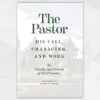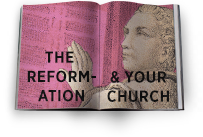Is the Reformation Just a White Man’s Legacy?: How the Reformation Addresses Social Exploitation
On April 3, 1963, as Martin Luther King Jr. sat frustrated in the musky confines of a Birmingham jail cell, he took issue not so much with the hatred of the world but the apathy of the church. King had just received a letter signed by eight concerned clergy that encouraged the Negro citizens of Birmingham to withdraw support from the non-violent protest movement and denounce it as extreme, unwise, and untimely. In a tone dripping with patient indignation, King responded, “In the midst of a mighty struggle to rid our nation of racial and economic injustice, I have heard many ministers say: ‘Those are social issues, with which the gospel has no real concern.’”
Over a half century later, King’s assessment remains mostly true among conservative evangelicals. For many, the Reformation has nothing substantial to say to racial and economic injustices.
THE REFORMATION & SOCIAL EXPLOITATION
However, the eve of the 500th anniversary of the Reformation, we must not forget that the theological errors of Medieval Catholicism were deeply intertwined with economic exploitation. Take a look at the 43rd of Luther’s 95 Theses: “Christians are to be taught that he who gives to the poor or lends to the needy does a better deed than he who buys indulgences.” Moreover, his 45th thesis explains, “Christians are to be taught that he who sees a needy man and passes him by, yet gives his money for indulgences, does not buy papal indulgences but God’s wrath.” From the very beginning, the Reformation represented a direct response not only to doctrinal errors, but also to the social exploitation and devastation which sprang from them. This alone suggests that perhaps Wittenberg has more to say to ongoing racial and economic injustice than we might have originally thought.
The problem of race in America is also deeply rooted in doctrinal errors that helped establish social exploitation. In her book, The Baptism of Early Virginia, historian Rebecca Goetz chronicles the way Anglican planters in colonial Virginia crafted the idea of “hereditary heathenism,” the belief that enslaved Africans and indigenous peoples couldn’t be converted to Christianity. She explains, “As they began to think of Indians and Africans not as potential Christians but as people incapable of Christian conversion, Anglo-Virginians laid the foundations for an emergent idea of race and an ideology of racism.”
HEREDITARY HEATHENISM & CATHOLICITY
Hereditary heathenism represented a direct repudiation of the doctrine of catholicity, a core theological tenet of the Reformed tradition that had been handed to the Virginia planters. As Anglicans, they regularly confessed with one voice, the words of the Apostles Creed, “I believe in . . . the holy catholic church.” Sixteenth-century Reformer Zacharias Ursinus explains that catholicity meant “the church is gathered out of all sorts of men, all states, kindreds, and nations.” Catholicity became a matter of Anglican (and Reformed) orthodoxy; it simply follows the redemptive promise that in the messiah “all nations shall be blessed” (see Genesis 12:3, 26:4; Galatians 3:8; Revelation 5:9).
Even as colonial planters laid the foundation for a racial caste system in America, they did it despite the theological tradition coming out of the Reformation. Imagine if the Anglican Planters had been faithful to this single point of the Reformed tradition handed to them. The entire tragic history of slavery and the racial caste system in America might have been different.
WHAT’S NEXT?
Continuing the tradition of the Protestant Reformation, the church today must use every theological tool at its disposal to confront and stand against the longstanding legacy, social exploitation, and devastation that has its roots in the doctrinal error of hereditary heathenism. Whatever they confess with their mouths, churches that refuse to practically live out their doctrine of catholicity may not be as orthodox or Reformed as they think.
Historically speaking, the Protestant Reformation was a European movement, and its confessional documents will always be culturally European documents. But insofar as they reflect the enduring truth of God’s Word and a moment in the history of God’s people, the Protestant Reformation has something to say to every diverse culture.
Here are a few practical suggestions churches might employ to be more faithful to the doctrine of catholicity.
Step 1: Recognize the Gospel Stakes
In the church of Antioch, cross-cultural fellowship became a proving ground for orthodoxy. In Galatians 2:11, Paul knows the Galatians had become infected with the theological error of legalism because some Jews refused to have full and free fellowship with their Gentile brothers and sisters in Christ. Due to their behavior toward the Gentiles, Paul knows the Judaizers have made Jewish cultural practices part of the currency of acceptance in the household of faith.
Although we cannot uncritically map the distinctions between Jew and Gentile directly onto ethnic divisions in the church today, we are still taught the danger of thinking any cultural practice or distinction purchases our seat at God’s table of acceptance. For Peter to give preference to the Jews was to participate in legalism that expressed itself through ethnocentrism. Evangelicals are good at spotting legalism when someone says, “Christians don’t dance.” But do we recognize it in the heart that says, “My people are better than yours”? Throughout the history of the American church, white supremacy has functioned as a form of legalism. In colonial America, enslaved Africans were often denied formal membership in churches, relegated to the balcony during worship services, forced to sit on the floors in shackles, and to take communion after whites. “Whiteness” was part of the currency of acceptance in the American church. The formation of the black church was a theological response to that form of legalism. During the civil rights period, southern white churches often excluded blacks within their written by-laws. Even today, many churches practices a soft separation, communicating in various ways that certain cultures are not welcomed on an equal footing. When we force other cultures to assimilate to our cultural practices in order to be accepted to into our churches, it says something about how we believe people are accepted before God. We need to ask ourselves: are we communicating something about the currency of acceptance with God simply in the way we relate or do not relate across cultural lines?
Step 2: Preach the Word without ignoring cultural contexts and implications.
This doesn’t mean putting something in the sermon that’s not in the Bible. It means, don’t leave out of the sermon something that is in the Bible. If you preach the Bible without ignoring these dynamics, you’d be surprised what you find.
For example, in Mark 11:15–19, the day after his triumphal entry into Jerusalem, Jesus returns to the Temple to cleanse it. Part of the corrupt situation that he finds at the Temple involved race-based, systematized injustice. Whereas the religious leaders protected the peace of the Temple’s inner courts where the Jews prayed and worshipped, because of ethnic strife, they brazenly turned the court of the Gentiles into a noisy and smelly livestock exchange and marketplace. In his zeal, Jesus completely dismantles the livestock exchange, refuses to let anybody pass through, and so restores the court for the Gentiles to pray. Then he exposits Isaiah 56:7, which says, “Is it not written, ‘My house shall be called a house of prayer for all the nations’?” This passage is clearly about the inclusion of the nations among the people of God. It has tremendous implications for engaging racial divisions and disparities in the church.
Step 3: Administer baptism without ignoring the cultural implications.
Because baptism and the Lord’s Supper signify not only our communion with Christ but also our communion with one another in Christ, it served as a powerful witness against racial divisions and disparities. Remember Galatians 3:27–29: “For as many of you were baptized into Christ have put on Christ. There is neither Jew nor Greek, there is neither slave nor free, there is neither male nor female, for you are all one in Christ Jesus. And if you are Christ’s, then you are Abraham’s offspring, heirs according to promise.”
We know from 1 Corinthians 12:13 and Colossians 3:11 that when he wrote Galatians 3:28, Paul was almost certainly quoting an ancient baptismal formula. As believers prepared to enter the community of faith, the Lord gave them a reorientation that challenged their previous thinking. Jews who were used to being on top among the people of God confessed there is “neither Jew nor Greek” because it is Christ alone, not one’s race or culture, that affords one’s place in God’s house. Men who were used to having greater access and status in every other place in society confessed “there is neither male nor female” because it is Christ alone, not one’s gender that affords a place in God’s house. The wealthy who were used to being on top confessed “there is neither slave nor free” because it is Christ alone, not one’s wealth, earthly citizenship, or political affiliation that affords a place in God’s house.
We all need the same blood and the same empty tomb. In Christ, we all—regardless of race, class, or gender—have equal status and equal access and equal inheritance as co-heirs in the household of God. As Martin Luther explained in his commentary on Galatians 3:28, “There is much disparity among men in the world, but there is no such disparity before God.”
Step 4: Carry out worship with a view toward the unity and catholicity of the church.
Part of orthodox worship means being intentional about helping diverse people to better understand the claims of the gospel and in so doing more faithfully worship the Lord. In my domination (the OPC), the directory for public worship says, “The unity and catholicity of the covenant people are to be manifest in public worship. Accordingly, the service is to be conducted in a manner that enables and expects all the members of the covenant community—male and female, old and young, rich and poor, educated and uneducated, healthy and infirm, people from every race and nation—to worship together.”
This is a wonderful statement that could go a long way toward making the household of faith an expression of the racial unity that the Lord intends among his people. We have to consider the cultural choices we make that might undermine some members’ ability to worship together.
Step 5: Pursue cross-cultural exposure and training.
In Acts 10:13, as Peter is on a roof, the Lord gives him a vision in which a sheet is let down from heaven with all these non-kosher animals on it. Then the Lord speaks to him from heaven, commanding him, “Rise up, Peter. Kill and eat.”
In the Great Commission (Matt. 28:16–20), the Lord had already instructed Peter and the other apostles to disciple the nations. So Peter already knew he was supposed to preach to the Gentiles. The Lord could have simply repeated this command. But this vision, while carrying that same basic message, is also doing something else. Through having Peter go through the cultural practice of eating like a Gentile, the Lord is equipping him not only to preach to the Gentiles but to live with them, to have cross-cultural fellowship with them. The Lord is training Peter to get over his Jewish cultural scruples and do what he must to convey to them that by faith alone, they too can be cleansed and accepted in Christ.









